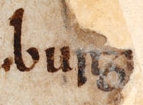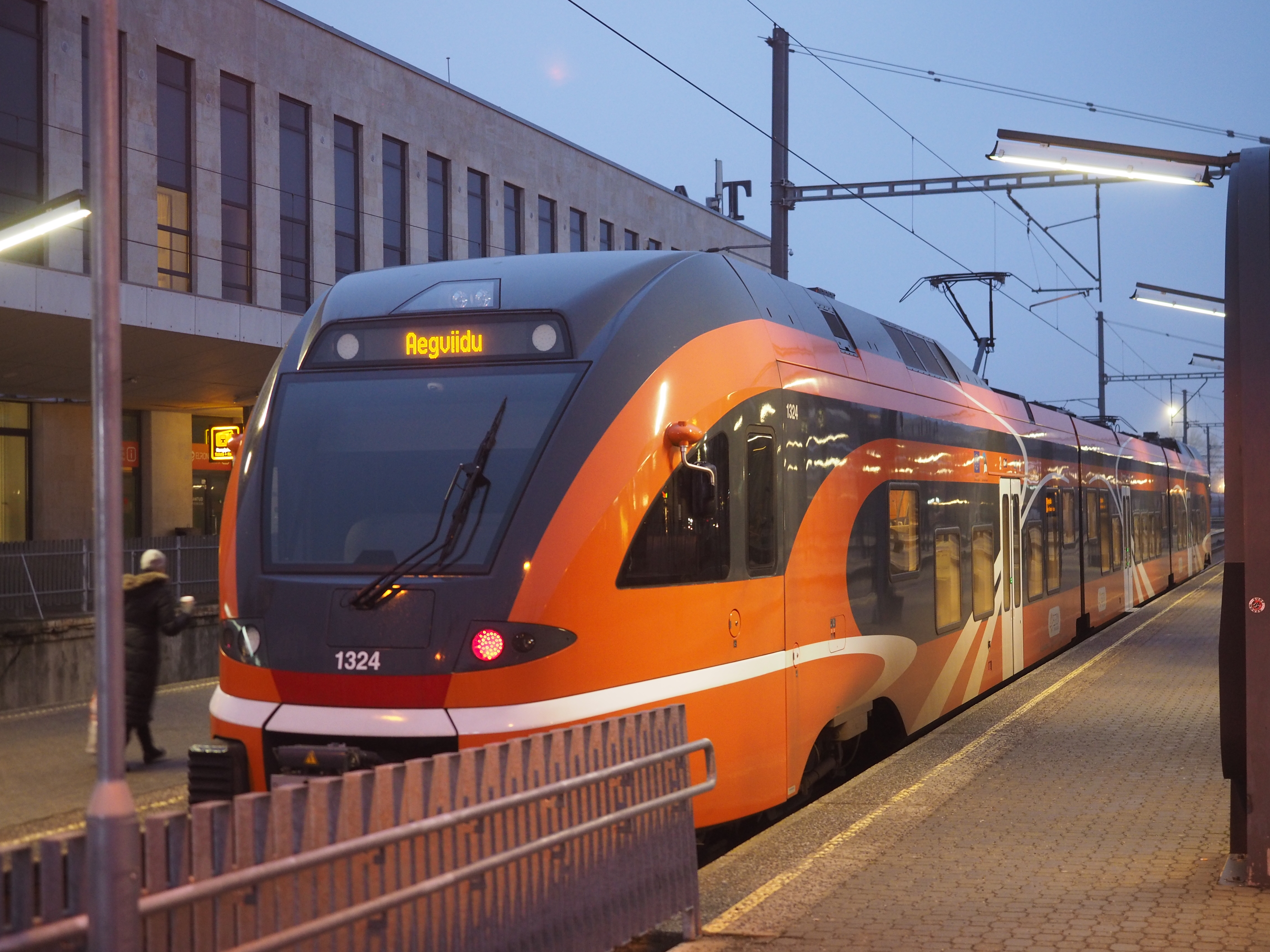|
Tootsi
Tootsi is a borough ( et, alev) in Põhja-Pärnumaa Parish, Pärnu County], in southwestern Estonia. Before the administrative reform in 2017, Tootsi had a municipality status of its own as Tootsi Parish () within Pärnu County. It has the population of 951 (as of 1 January 2009) and an area of 1.76 km². Tootsi was founded in 1938, and in 1949 was granted borough rights. Until December 2018 Tootsi had a station on the Tallinn - Pärnu railway line operated by Elron located in the neighbouring village of Elbi. There is a museum dedicated to the peat industry in Tootsi. Musician and playwright Ivar Põllu Ivar (Old Norse ''Ívarr'') is a Scandinavian masculine given name. Another variant of the name is Iver, which is more common in Norway. The Old Norse name has several possible etymologies. In North Germanic phonology, several of the elements c ... was born in Tootsi in 1974. References External linksOfficial website Põhja-Pärnumaa Parish Boroughs and sm ... [...More Info...] [...Related Items...] OR: [Wikipedia] [Google] [Baidu] |
Elbi
Elbi is a village in Tori Parish, Pärnu County in southwestern Estonia. (retrieved 28 July 2021) Tootsi station on the Edelaraudtee Edelaraudtee (''Southwestern railway'') is an Estonian railway operator founded in 1997. AS Edelaraudtee operates freight services on lines from Tallinn to Rapla, Pärnu & Viljandi owned by Edelaraudtee Infrastruktuuri AS. Until 2014, the com ...'s western route is located in Elbi. References Villages in Pärnu County {{Pärnu-geo-stub ... [...More Info...] [...Related Items...] OR: [Wikipedia] [Google] [Baidu] |
Põhja-Pärnumaa Parish
Põhja-Pärnumaa Parish ( et, Põhja-Pärnumaa vald) is a rural municipality in Pärnu County.http://www.pparnumaa.ee/ (accessed 7 March 2020) Settlements ;Boroughs Pärnu-Jaagupi, Tootsi, Vändra ;Villages There are 86 villages: Aasa, Allikõnnu, Altküla, Aluste, Anelema, Arase, Eametsa, Eense , Eerma, Enge, Ertsma , Halinga, Helenurme, Kaansoo, Kablima , Kadjaste, Kaelase, Kaisma, Kalmaru, Kangru , Kergu, Kirikumõisa , Kobra , Kodesmaa, Kõnnu , Kose , Kullimaa , Kuninga , Kurgja, Langerma , Leetva, Lehtmetsa , Lehu, Libatse, Loomse, Luuri, Lüüste, Mädara, Mäeküla, Maima, Massu, Metsavere, Metsaküla , Mõisaküla, Mustaru, Naartse, Oese, Oriküla, Pallika , Pärnjõe, Pereküla, Pitsalu, Pööravere , Rae, Rahkama, Rahnoja , Rätsepa, Reinumurru, Roodi , Rõusa, Rukkiküla, Säästla, Salu , Samliku, Sepaküla , Sikana, Sohlu, Sõõrike, Soosalu , Suurejõe, Tagassaare, Tarva, Tõrdu, Tühjasma, Ünnaste, Vahenurme, Vakalepa, Va ... [...More Info...] [...Related Items...] OR: [Wikipedia] [Google] [Baidu] |
Administrative Reform In Estonia
Administrative reform in Estonia ( et, Eesti omavalitsuste haldusreform) was administrative reform which took place in 2017 and resulting in new administrative units in Estonia. In general, old units incorporated voluntarily, but in some cases incorporations were forced by state powers. After the reform, there are 79 administrative units (before 2017 there were 213): 15 urban and 64 rural municipalities. Eesti kohalike omavalitsuste loetelu, 01.01.2019 seisuga 185 municipalities merged to form 51 new ones, and 28 municipalities did not merge. Old and new administrative units |
Municipalities Of Estonia
A municipality ( et, omavalitsus, plural ) is the smallest administrative subdivision of Estonia. Each municipality is a unit of self-government with its representative and executive bodies. The municipalities in Estonia cover the entire territory of the country. Municipalities in Estonia are of two types: *Urban municipalities or towns (, singular ) *Rural municipalities or parishes (, singular ). There is no other status distinction between them. Municipalities may contain one or several settlements. All but 5 urban municipalities ( Haapsalu, Narva-Jõesuu, Paide, Pärnu and Tartu) plus 1 rural municipality ( Ruhnu) contain only one settlement. As of 2017, there are no longer any "borough-parishes", i.e. rural municipalities with only one borough-type settlement. Ruhnu Parish contains only one village and is therefore a "village-parish". Some municipalities are divided into districts. The 8 urban districts (, singular ) of Tallinn have limited self-government, while ot ... [...More Info...] [...Related Items...] OR: [Wikipedia] [Google] [Baidu] |
Boroughs And Small Boroughs In Estonia
A borough is an administrative division in various English-speaking countries. In principle, the term ''borough'' designates a self-governing walled town, although in practice, official use of the term varies widely. History In the Middle Ages, boroughs were settlements in England that were granted some self-government; burghs were the Scottish equivalent. In medieval England, boroughs were also entitled to elect members of parliament. The use of the word ''borough'' probably derives from the burghal system of Alfred the Great. Alfred set up a system of defensive strong points (Burhs); in order to maintain these particular settlements, he granted them a degree of autonomy. After the Norman Conquest, when certain towns were granted self-governance, the concept of the burh/borough seems to have been reused to mean a self-governing settlement. The concept of the borough has been used repeatedly (and often differently) throughout the world. Often, a borough is a single town ... [...More Info...] [...Related Items...] OR: [Wikipedia] [Google] [Baidu] |
Ivar Põllu
Ivar (Old Norse ''Ívarr'') is a Scandinavian masculine given name. Another variant of the name is Iver, which is more common in Norway. The Old Norse name has several possible etymologies. In North Germanic phonology, several of the elements common to Germanic names became homophonous. The first element ''Ívarr'' may contain '' yr'' "yew" and ''-arr'' (from ''hari'', "warrior"), but it may have become partly conflated with Ingvar, and possibly Joar (element '' jó'' "horse"). The second element ''-arr'' may alternatively also be from ''geir'' "spear" or it may be ''var'' "protector". citing Lena Peterson: Nordiskt runnamnslexikon (2002), Árni Dahl: Navnabókin (2005), Kristoffer Kruken og Ola Stemshaug: Norsk Personnamnleksikon (1995), Roland Otterbjörk: Svenska förnamn (1979). The name was adopted into English as [...More Info...] [...Related Items...] OR: [Wikipedia] [Google] [Baidu] |
Elron (rail Transit)
AS Eesti Liinirongid, operating as Elron, is a government-owned passenger train operator in Estonia. The company was founded as a subsidiary of Eesti Raudtee in 1998, and separated shortly thereafter. Prior to 2014, the company operated exclusively the electrified commuter rail system in Harjumaa, and was known until October 2013 as ''Elektriraudtee'', i.e. "the Electrical Railway". On 1 January 2014 Elron took over all domestic passenger train services in Estonia from Edelaraudtee. Network Inter-city rail Elron operates inter-city trains from Tallinn's Balti jaam on several lines: Tallinn–Tartu– Valga (connecting to Pasažieru vilciens trains to Riga), Tallinn–Tartu– Koidula, Tallinn– Narva, and Tallinn– Viljandi. Services on the Tallinn– Pärnu route ended in December 2018. The line required substantial upgrading and it was not felt worthwhile spending the money required for this around 8 years before Rail Baltica is due to provide much faster servic ... [...More Info...] [...Related Items...] OR: [Wikipedia] [Google] [Baidu] |
Pärnu
Pärnu () is the fourth largest city in Estonia. Situated in southwest Estonia, Pärnu is located south of the Estonian capital, Tallinn, and west of Estonia's second largest city, Tartu. The city sits off the coast of Pärnu Bay, an inlet of the Gulf of Riga, which is a part of the Baltic Sea. In the city, the Pärnu River drains into the Gulf of Riga. Pärnu is a popular summer holiday resort town among Estonians with many hotels, restaurants and large beaches. The city is served by Pärnu Airport. History Perona (german: Alt-Pernau, links=no, et, Vana-Pärnu, links=no), which was founded by the bishop of Ösel–Wiek , suffered heavily under pressure of the concurrent town, and was finally destroyed . Another town, Embeke (later german: Neu-Pernau, links=no, et, Uus-Pärnu, links=no) was founded by the Livonian Order, who began building an Ordensburg nearby in 1265. The latter town, then known by the German name of , was a member of the Hanseatic League and a ... [...More Info...] [...Related Items...] OR: [Wikipedia] [Google] [Baidu] |
Tallinn
Tallinn () is the most populous and capital city of Estonia. Situated on a bay in north Estonia, on the shore of the Gulf of Finland of the Baltic Sea, Tallinn has a population of 437,811 (as of 2022) and administratively lies in the Harju '' maakond'' (county). Tallinn is the main financial, industrial, and cultural centre of Estonia. It is located northwest of the country's second largest city Tartu, however only south of Helsinki, Finland, also west of Saint Petersburg, Russia, north of Riga, Latvia, and east of Stockholm, Sweden. From the 13th century until the first half of the 20th century, Tallinn was known in most of the world by variants of its other historical name Reval. Tallinn received Lübeck city rights in 1248,, however the earliest evidence of human population in the area dates back nearly 5,000 years. The medieval indigenous population of what is now Tallinn and northern Estonia was one of the last " pagan" civilisations in Europe to adopt Christia ... [...More Info...] [...Related Items...] OR: [Wikipedia] [Google] [Baidu] |
Populated Places In Estonia
Populated places in Estonia Estonia, formally the Republic of Estonia, is a country by the Baltic Sea in Northern Europe. It is bordered to the north by the Gulf of Finland across from Finland, to the west by the sea across from Sweden, to the south by Latvia, and t ... (officially: settlement units), are cities or settlement units of rural municipalities, but only cities have administrative functions. Settlement units are divided into settlements and urban regions et, asum (subdivisions of cities). Officially there are five types of settlement units in Estonia: *town/city ( et, linn) *town without municipal status () *borough () *small borough () *village () See also * Municipalities of Estonia * List of cities and towns in Estonia * Counties of Estonia Notes External links Place Names Board of Estonia [...More Info...] [...Related Items...] OR: [Wikipedia] [Google] [Baidu] |
List Of Sovereign States
The following is a list providing an overview of sovereign states around the world with information on their status and recognition of their sovereignty. The 206 listed states can be divided into three categories based on membership within the United Nations System: 193 member states of the United Nations, UN member states, 2 United Nations General Assembly observers#Present non-member observers, UN General Assembly non-member observer states, and 11 other states. The ''sovereignty dispute'' column indicates states having undisputed sovereignty (188 states, of which there are 187 UN member states and 1 UN General Assembly non-member observer state), states having disputed sovereignty (16 states, of which there are 6 UN member states, 1 UN General Assembly non-member observer state, and 9 de facto states), and states having a political status of the Cook Islands and Niue, special political status (2 states, both in associated state, free association with New Zealand). Compi ... [...More Info...] [...Related Items...] OR: [Wikipedia] [Google] [Baidu] |







